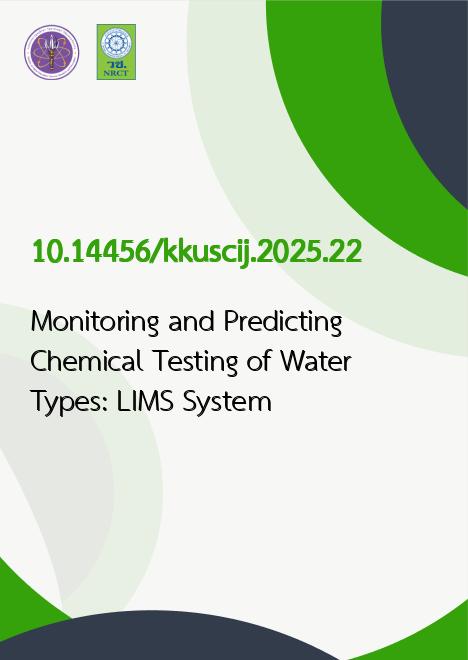
|
Monitoring and Predicting Chemical Testing of Water Types: LIMS System |
|---|---|
| รหัสดีโอไอ | |
| Creator | Somsri Jarupadung |
| Title | Monitoring and Predicting Chemical Testing of Water Types: LIMS System |
| Contributor | Wararat Jakawat1, Soraya Singsaro, Phusadee Muhamud |
| Publisher | Faculty of Science, Khon Kaen University |
| Publication Year | 2568 |
| Journal Title | KKU Science Journal |
| Journal Vol. | 53 |
| Journal No. | 2 |
| Page no. | 262-275 |
| Keyword | Data Visualization, Dashboard, Data Management |
| URL Website | https://ph01.tci-thaijo.org/index.php/KKUSciJ |
| Website title | Thai Journal Online (ThaiJO) |
| ISSN | 3027-6667 |
| Abstract | Data management plays a crucial role in Laboratory Information Management Systems, which are used to collect customer information and conduct chemical tests for water samples. However, successfully managing chemical testing processes presents obstacles, particularly in terms of financial expenditures, resource allocation, and waste management. A well-designed dashboard can help optimize chemical testing and improve resource planning. This study presents data in the form of dashboards that feature both historical and predictive maintenance observations. The primary goal is to evaluate and show historical water sample data, which will serve as the foundation for developing a prediction model using Gradient Boosted Regression. The study process consists of collecting data from the water sample testing service from Laboratory Information Management System (LIMS), Center of Measurement and Standard Accreditation, Faculty of Science, Prince of Songkla University, followed by data processing, which involves data cleaning. This cleaned data is then used to create a model and present the visualization from both the predictions and the actual data. The R-squared score from this model is 0.82. By analyzing and forecasting the volume of water samples, the study helps improve the accuracy of resource allocation, allowing for more efficient planning and management of chemical testing operations. Ultimately, this approach contributes to reducing waste and minimizing unnecessary expenses, optimizing both financial and environmental outcomes in water quality testing. |